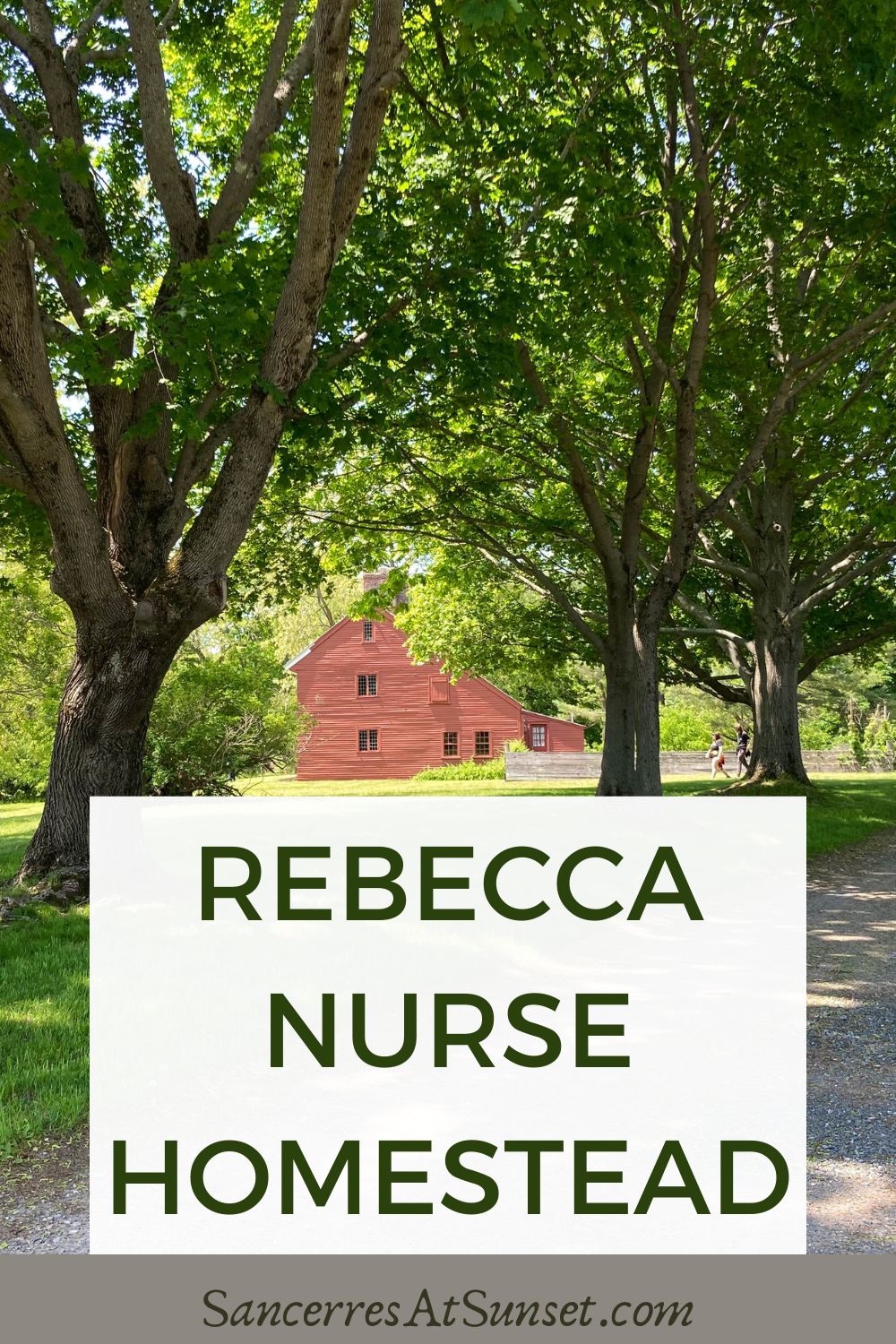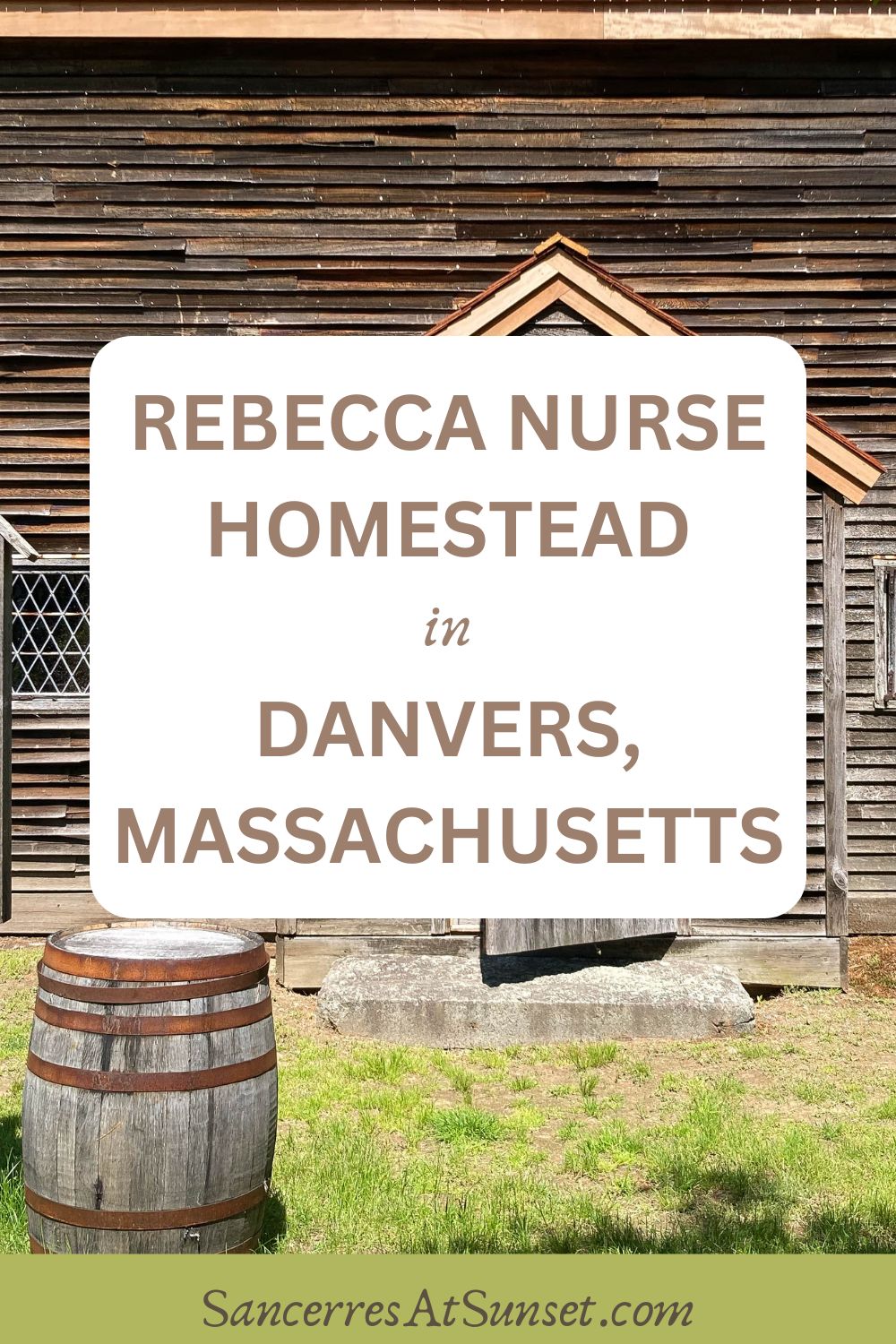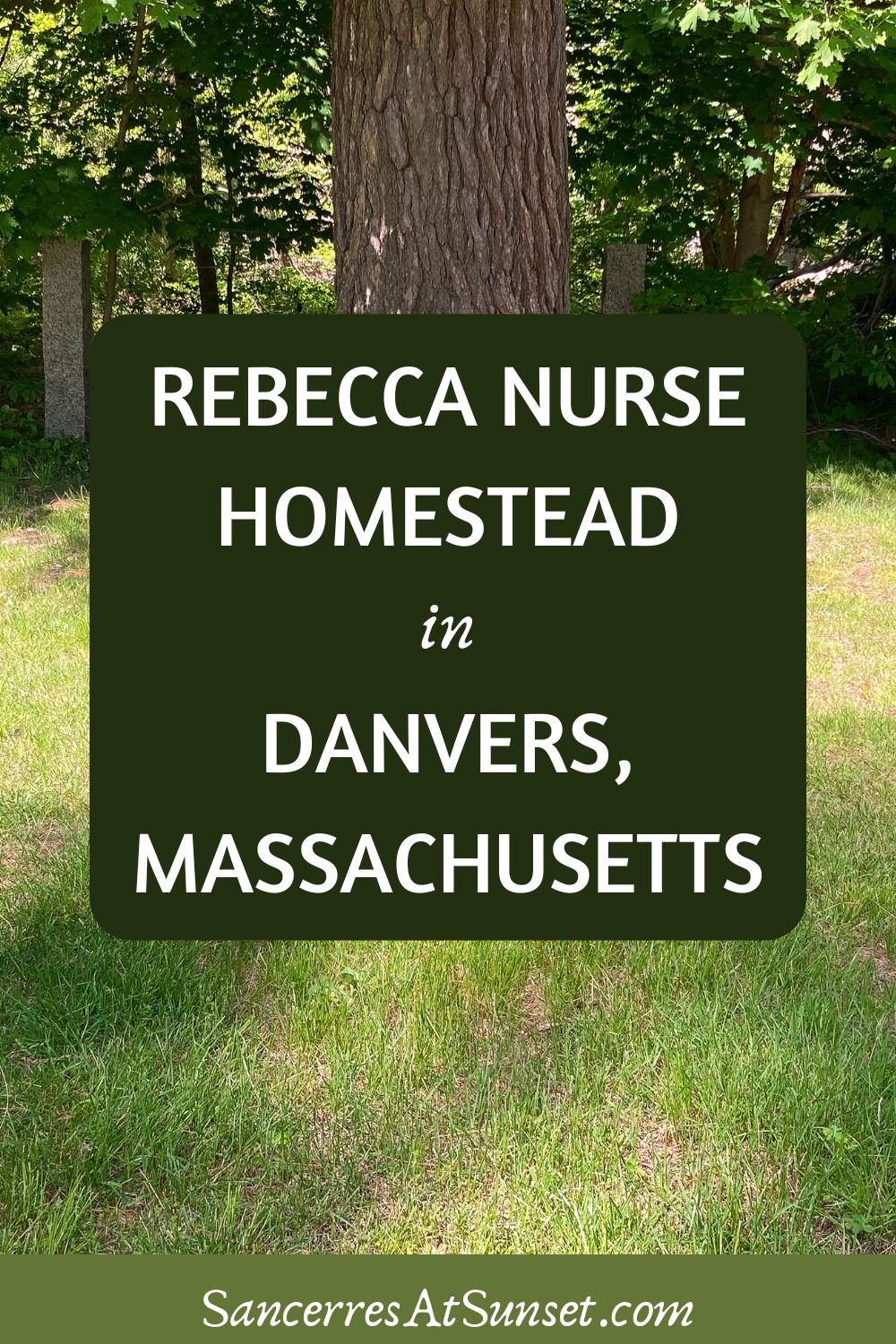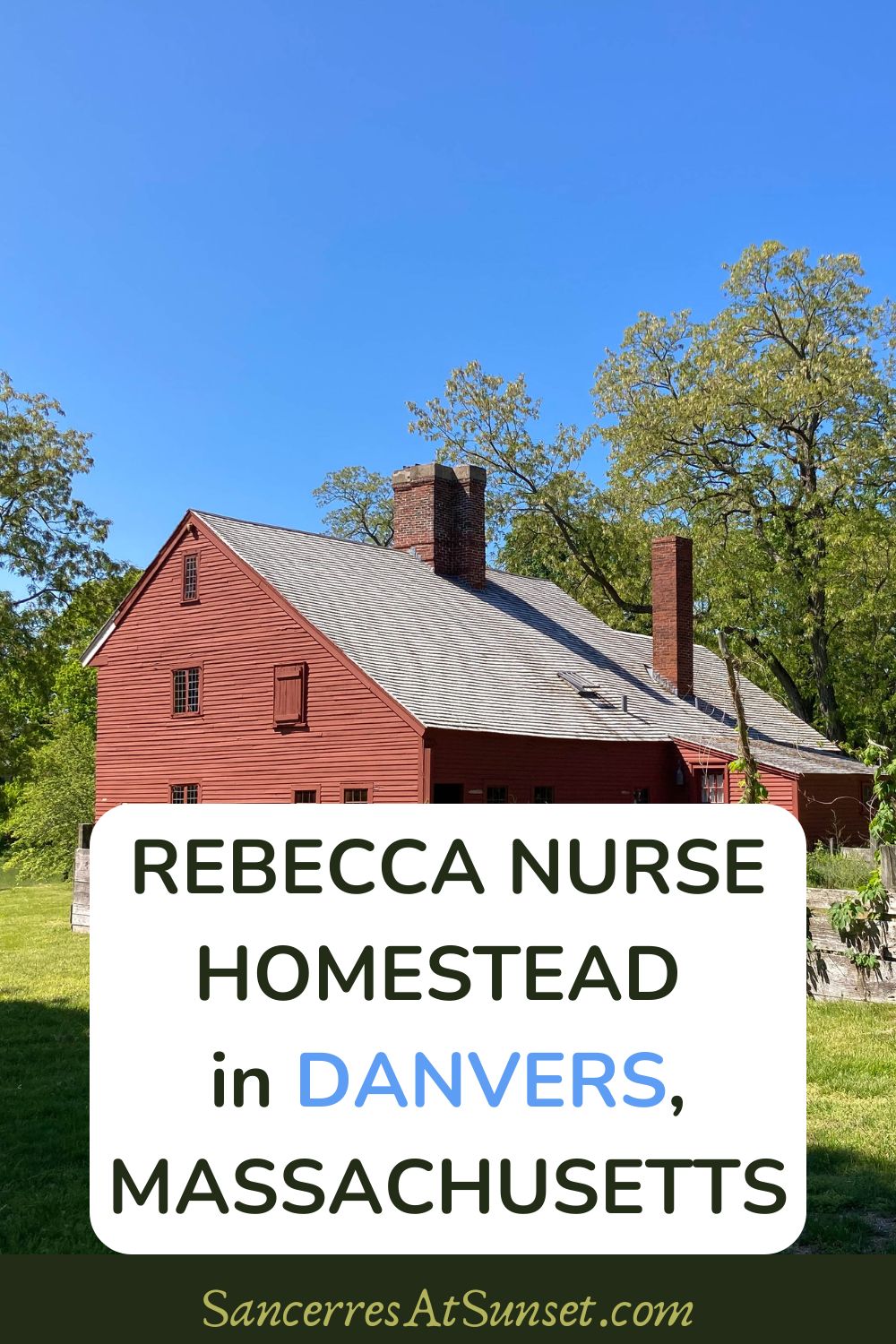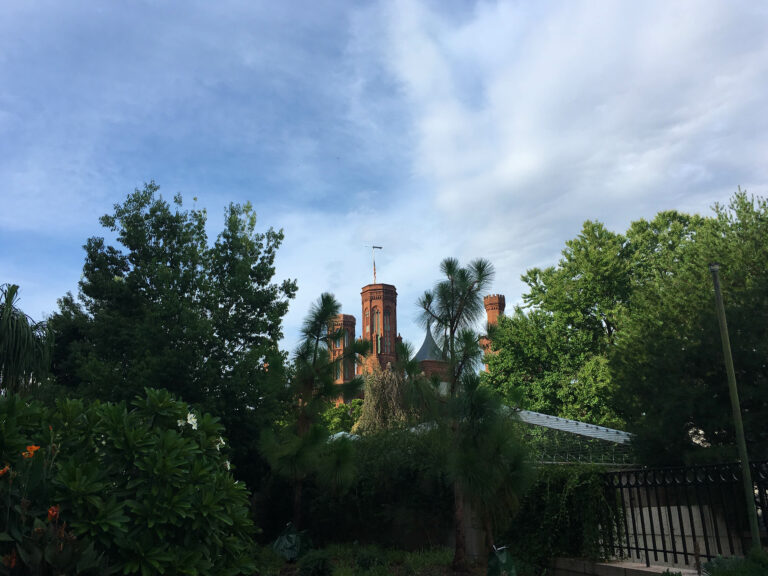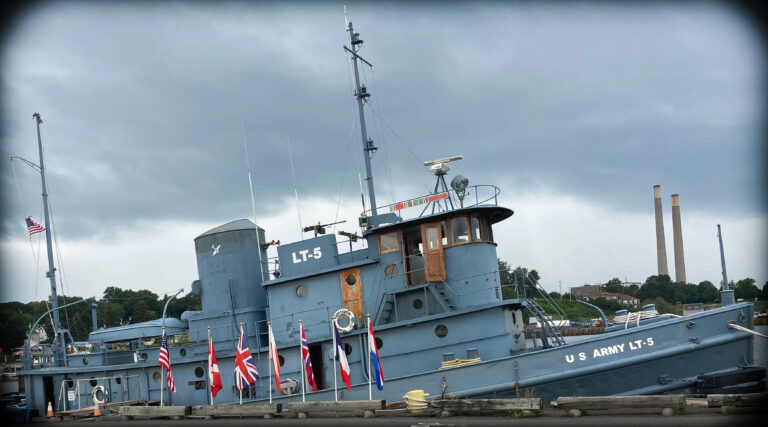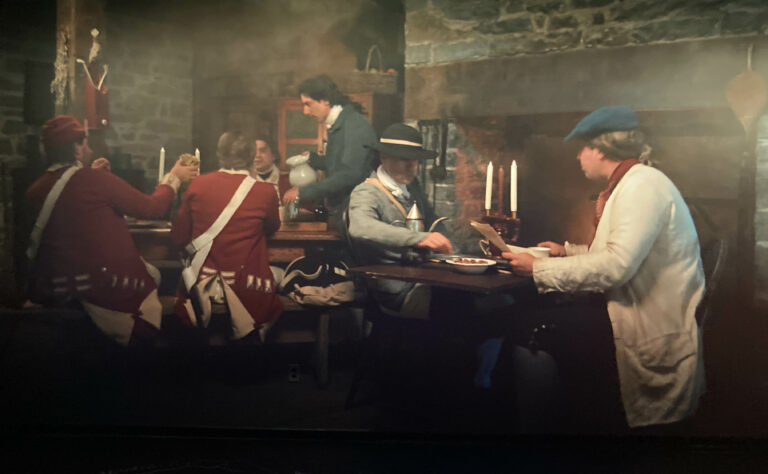Rebecca Nurse Homestead in Danvers, Massachusetts

A spinning wheel sits idle. Baskets hold jumbled wool and the cards used to untangle it. Ash coats the floor of the brick fireplace. A cast-iron kettle hangs above from a chain. A skillet sits atop a long-legged trivet on the hearth.
This post contains affiliate links. For more information, click here.
My companion and I were visiting the Rebecca Nurse Homestead in Danvers, Massachusetts. Rebecca Nurse was a 71-year-old grand-mother hanged during the infamous Salem witch hunt of 1692-93. Her homestead is the only dwelling place of any of the victims that’s open to the public.
Rebecca Towne was born in Yarmouth, England, in 1621. Her family immigrated to the Colony of Massachusetts Bay c. 1638-40. She married Francis Nurse c. 1644. The couple would have eight children.
In 1678, Francis Nurse bought 300 acres in Salem Village from Reverend Samuel Allen, of the First Church of Salem, for 400 pounds. The Nurse family built a typical New England salt-box home on the property.
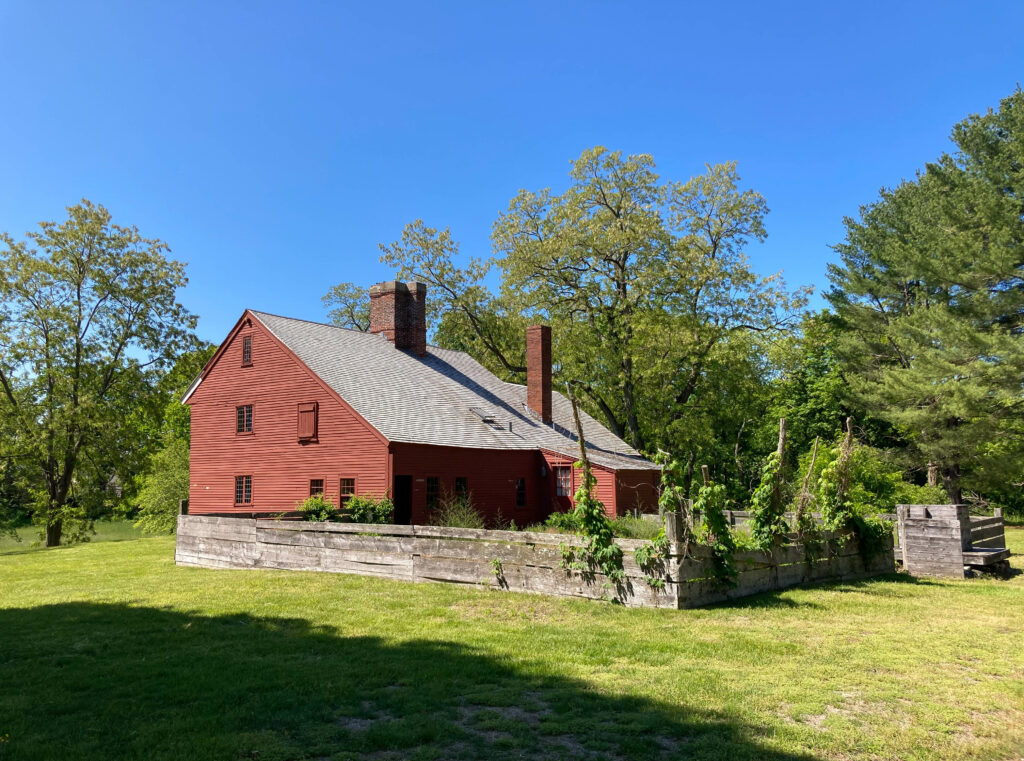
Salem Village incorporated in 1757 as the Town of Danvers. According to legend, the town was named after Sir Danvers Osborn, a depressive royal governor of New York, who hanged himself in 1753. I was born in the modern city of Salem and have visited neighboring Danvers many times.
The storied hysteria began in January 1692 at the Salem Village home of Rev. Samuel Parris. His nine-year-old daughter Elizabeth and 11- or 12-year old orphaned niece Abigail Williams, who lived in the Parris home, began to display bizarre fits — screaming, throwing things, making strange sounds, and twisting themselves into odd positions. Soon other local girls displayed the same behavior.
A Village doctor diagnosed supernatural evil as the cause. The girls accused Tituba, a Caribbean slave in the Parris home, and two poor white women, Sarah Good and Sarah Osborne.
Magistrates Jonathan Corwin and John Hathorne interrogated the three accused women for several days in March. Hathorne was the great-great-grandfather of novelist Nathaniel Hawthorne, who added a w to the family surname, many believe to distance himself from his ancestor’s actions during the witch hunt. Corwin’s home in Salem is open to the public as the Witch House; like the Nurse home, it is one of few still-standing buildings with direct links to persons involved in the witch hunt.
The poor white women maintained their innocence, but Tituba confessed and implicated them. She told a colorful tale about colluding with the devil. In the 17th century, to practice witchcraft meant to make a pact with the devil in exchange for supernatural powers.
She also said that there were many other witches seeking to harm the people of Salem. The fear and the accusations snowballed. Throughout the terrible time, confessing would prove a promising pathway to avoiding death, but it kept the hysteria alive.
On March 24, 1692, Rebecca Nurse was arrested at home for witchcraft. She was at the time a 71-year-old grandmother and a well respected member of the community, known as a pious Christian. Thirty-nine people signed a petition on her behalf.
Her several accusers made a number of outlandish claims, including that they could see the devil whispering in her ear. This kind of testimony was called “spectral evidence”, accounts of things witnessed in visions or dreams. Such “spectral evidence” was key to the witch trials.
On April 21, married couple William and Deliverance Hobbs were arrested for witchcraft. She confessed under interrogation; he did not.
Newly appointed Royal Governor William Phips arrived in Boston on May 14. By then, more than 100 people had been arrested for witchcraft in and around Salem Village.
Gov. Phips created a special court to try the accused. He appointed hard-liner William Stoughton as chief justice. He would act as both judge and prosecutor during the ensuing trials.
According to the custom of the day, Rebecca Nurse was not allowed legal representation her at trial in June. One of the many people to testify against her was Deliverance Hobbs; she would also accuse her own husband. Goodwife Nurse objected, “she is one of us.”
At first the jury acquitted Goody Nurse. But upon the not-guilty verdict, the “afflicted” girls renewed their fits.
With no protection against double jeopardy, Judge/prosecutor Stoughton instructed the jury to reconsider.
Goody Nurse was asked what she’d meant by the “she’s one of us” comment. The hard-of-hearing defendant did not respond. Her silence was interpreted as an admission of guilt. She later explained that she’d meant that Goody Hobbs had been accused and imprisoned with her.
The jury changed its verdict and convicted her. She was excommunicated from the church on July 3.
Her supporters appealed to Gov. Phips. He first granted her a reprieve, then reversed himself.
Rebecca Nurse was hanged on July 19. According to legend, her family secretly retrieved her body and buried it in an unmarked grave on the homestead property.
Sarah Good was hanged at the same time. While incarcerated, she had given birth to a daughter Mercy, who died in jail before her mother’s execution. Another daughter, named Dorcas or Dorothy, of about four- to six-years-old, was also accused of witchcraft and imprisoned with her mother. Not surprisingly, the little girl confessed; she was never tried and was released in December.
Meanwhile, Sarah Osborne had died in jail on May 29.
William Hobbs was also released from jail in December. History is not clear on when Deliverance Hobbs was released. Her husband is believed to have left town without her.
Meanwhile, on August 1, Gov. Phips left to oversee construction of Fort William Henry in present-day Maine. (The 17th-century New England fort should not be confused with the 18th-century New York fort of the same name, which inspired James Fenimore Cooper‘s novel The Last of the Mohicans.)
By the time he returned on September 29: 12 more people had been hanged, including Rebecca Nurse’s sister Mary Eastey; 81-year-old Giles Corey had been pressed to death in an unsuccessful effort to force a plea, and many more had been accused, reportedly including the Governor’s wife.
Gov. Phips responded by forming a new court and disallowing “spectral evidence”. Few of those tried in the new court were convicted, and Gov. Phips pardoned them. By May 1693, he had released all remaining prisoners. The witch hunt was over.
Among the prisoners freed in 1693 were Tituba and Sarah Cloyce, another sister of Rebecca Nurse and Mary Eastey, who would live out her days trying to clear their names until her death in 1703.
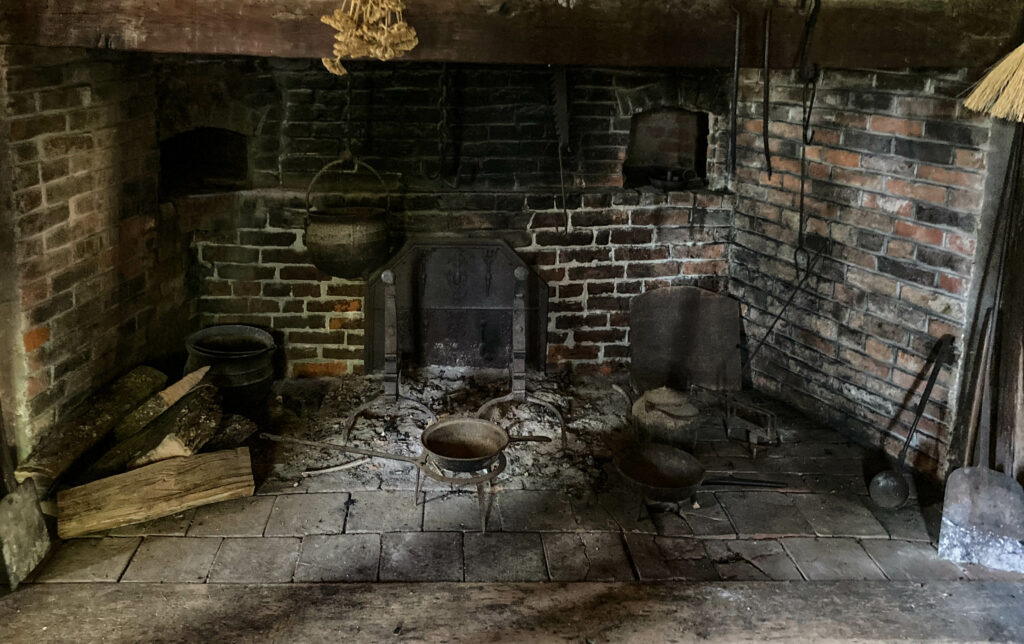
Visitors today may tour the Nurse family’s salt-box home, restored with period artifacts, including furniture, a spinning wheel, and a large hearth.
You may pay respects at the Nurse family cemetery on the property. While the location of Rebecca Nurse’s grave is unknown, a large monument commemorates her in the center of the cemetery. There is also a stone honoring the 39 people who signed the petition in her defense. And there are several graves of Nurse family members.
The cemetery also hosts the grave of George Jacobs, who was hanged for witchcraft on August 19, 1692. His remains were discovered during the 1950s and interred in the Nurse graveyard in 1992, the 300th anniversary of the witch hunt. The graveyard is the only known burial site of anyone hanged for witchcraft during the hysteria.
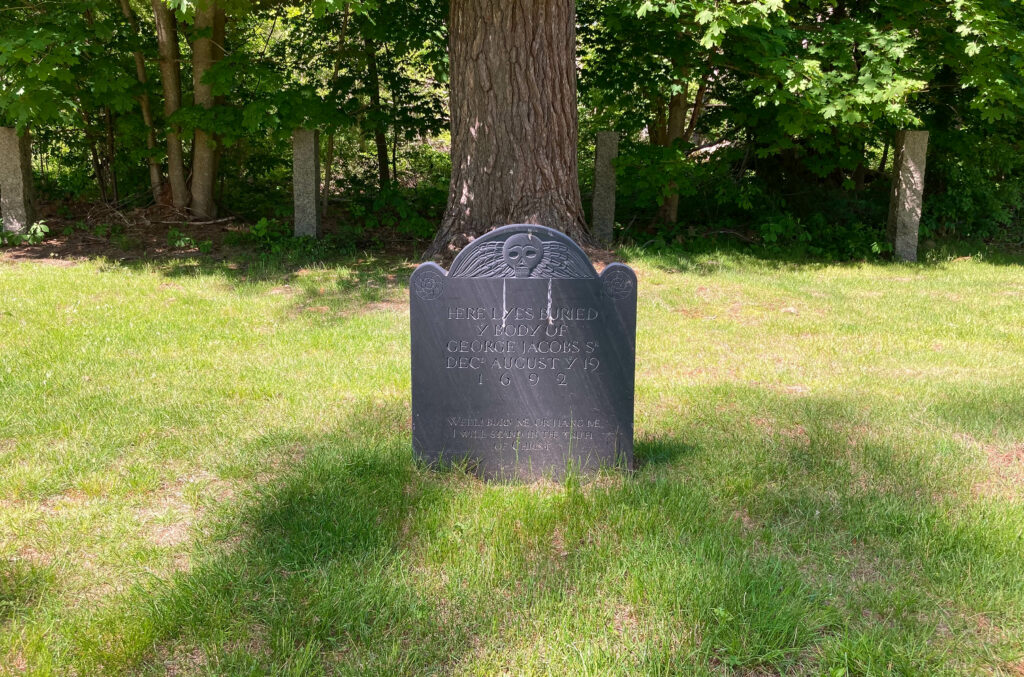
You may also visit a replica of the Salem Village Meeting House, where Rebecca Nurse and others were tried. The replica was built during the 1980s for use in the historically accurate mini-series Three Sovereigns for Sarah, about Sarah Cloyce.
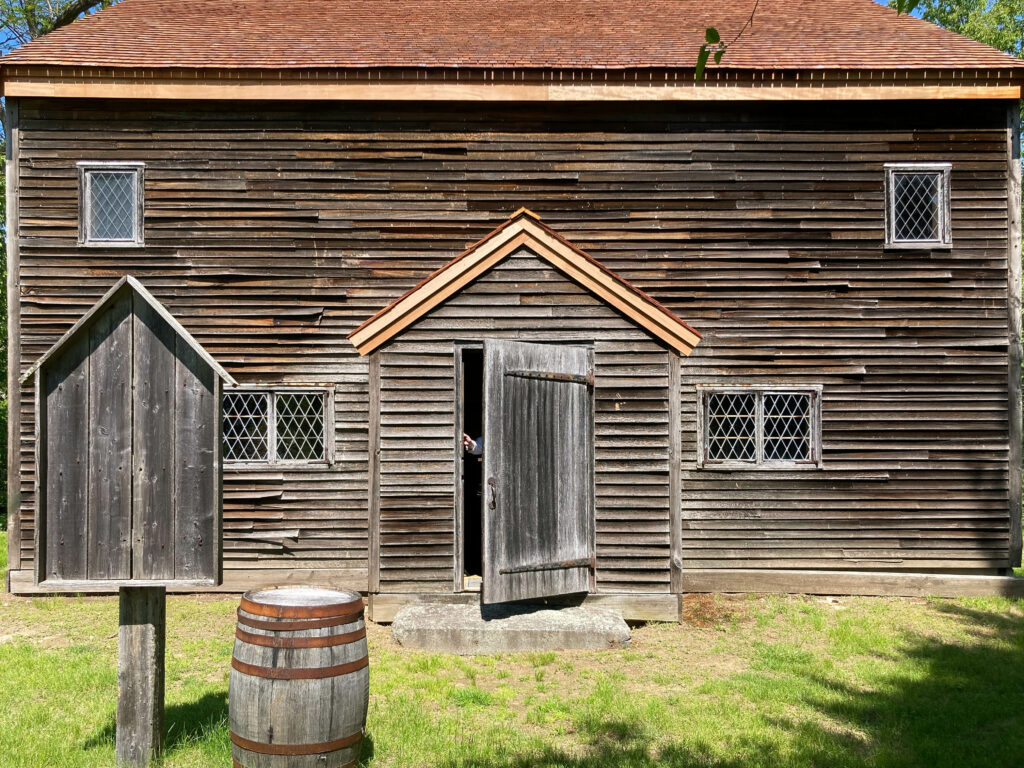
The other people who are known to have died as a result of the witch hunt are:
- Bridget Bishop, hanged, June 10, 1692
- Roger Toothaker, died in jail, June 16, 1692
- Elizabeth Howe, hanged, July 19, 1692
- Susannah Martin, hanged, July 19, 1692
- Katherine Lockhart, hanged, July 24, 1692
- Sarah Wildes, hanged, July 29, 1692
- George Burroughs, hanged, August 19, 1692
- Martha Carrier, hanged, August 19, 1692
- John Proctor, hanged, August 19, 1692
- John Willard, hanged, August 19, 1692
- Martha Corey, hanged, September 22, 1692
- Alice Parker, hanged, September 22, 1692
- Mary Parker, hanged, September 22, 1692
- Ann Pudeator, hanged, September 22, 1692
- Wilmot Redd, hanged, September 22, 1692
- Margaret Scott, hanged, September 22, 1692
- Samuel Wardwell, hanged, September 22, 1692
- Anne Foster, died in jail, December 3, 1692
- Lydia Dustin, acquitted but unable to pay court fees, died in jail, March 10, 1693
What to Know before You Go to the
Rebecca Nurse Homestead
The Rebecca Nurse Homestead is located at 149 Pine Street in Danvers, Massachusetts.
The museum maintains limited, seasonal hours, so please check the Web site for opening days and times. As of this writing, the Web site states that guided tours of the house are offerred at scheduled times, but when a family member and I visited on a recent Saturday, the atmosphere was much more relaxed, with a docent more informally providing information and answering questions as groups came and went. Also, when we arrived at opening time, a sign stating that the site was closed had not yet been removed, so call first before abandoning your plans if you see this sign when the museum is supposed to be open. There is ample parking.
The trail to the Nurse family graveyard passes by a wooded area; stay on the trail, and check yourself and your companions for ticks as soon as you emerge. Deer ticks are common carriers of Lyme disease in Massachusetts.
Wear comfortable layers and closed-toe walking shoes. Allow 60 to 90 minutes.
My family and I enjoyed a satisfactory stay at the Best Western Plus North Shore, about 1.6 miles from the Rebecca Nurse Homestead.
Continue your adventure in the Northeast:
- Corning Museum of Glass in New York
- Gettysburg National Military Park in Pennsylvania
- Hotel-Hopping on the Atlantic City Boardwalk
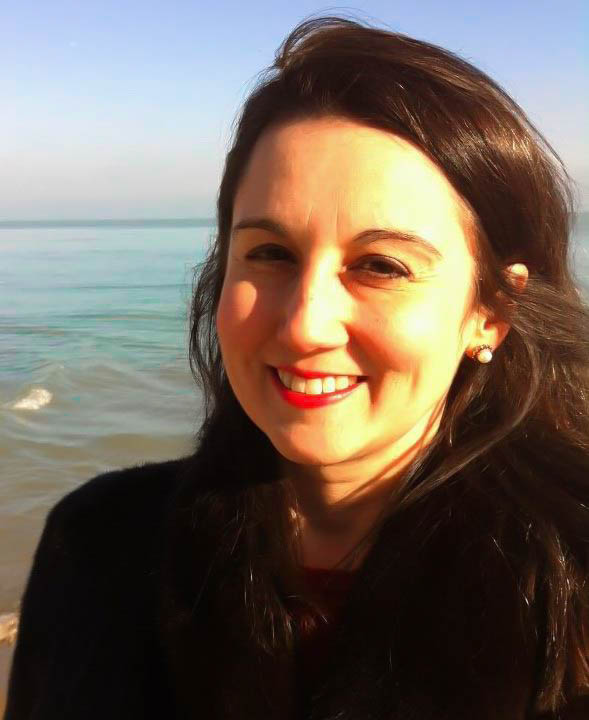
After my misspent youth as a wage worker, I’m having so much more fun as a blogger, helping other discerning travellers plan fun and fascinating journeys. Read more …
